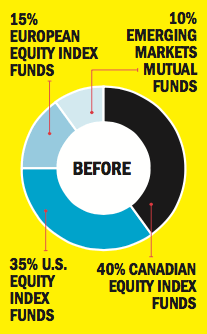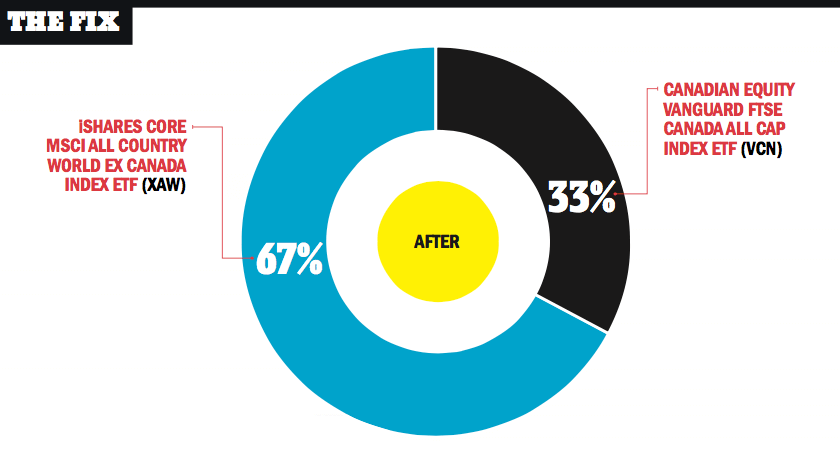The problem with having too much equity
The Silverbergs want to move their 100% equity portfolio into low-cost ETFs. Is it the right choice for them?
Advertisement
The Silverbergs want to move their 100% equity portfolio into low-cost ETFs. Is it the right choice for them?
 For the past 18 years, Karine and Dave Silverberg of Milton, Ont., have managed their own portfolio of mutual funds. Neither has a company pension so the 38-year-old couple has been very aggressive with asset allocation. “Up to now, we’ve been 100% in equities,” says Karine, who oversees their six-figure portfolio to which they contribute $4,000 a month. All their investments are in index funds with fees of up to 1.1%. The couple now wants to switch to lower-fee exchange-traded funds (ETFs), but is starting to question their 100% equity position. “Is it right for the long term?” asks Karine. “We won’t need the money for years.”
For the past 18 years, Karine and Dave Silverberg of Milton, Ont., have managed their own portfolio of mutual funds. Neither has a company pension so the 38-year-old couple has been very aggressive with asset allocation. “Up to now, we’ve been 100% in equities,” says Karine, who oversees their six-figure portfolio to which they contribute $4,000 a month. All their investments are in index funds with fees of up to 1.1%. The couple now wants to switch to lower-fee exchange-traded funds (ETFs), but is starting to question their 100% equity position. “Is it right for the long term?” asks Karine. “We won’t need the money for years.”

Share this article Share on Facebook Share on Twitter Share on Linkedin Share on Reddit Share on Email